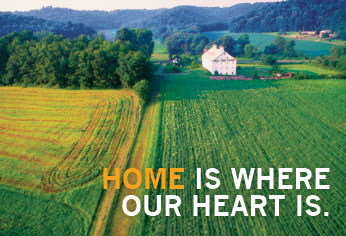Give. Grow. Create.

This post is part of the #CF100 Series of blog posts. The Council on Foundations is marking the 100th anniversary of the nation’s first community foundation, The Cleveland Foundation, by highlighting the roles of community foundations with this series.
See where it all began at our
Fall Conference for Community Foundations in Cleveland this October!

Fifteen years ago, a dedicated group of Appalachian Ohio’s leaders recognized a significant gap in their region. Appalachian Ohio was woefully undercapitalized in philanthropic resources, making it harder for the region’s communities to address challenges and pursue opportunities. The philanthropy gap was standing in the way of community and regional progress so, leaders from across the region created the Foundation for Appalachian Ohio (FAO).
 Appalachian Ohio is a culturally rich, but economically challenged region in America. As mining declined generations ago, so did the economic opportunity and supports necessary for the region’s, and its citizens’, prosperity. A vast region of 32 counties running through Youngstown in northeast Ohio and over towards Cincinnati in southwest Ohio, Appalachian Ohio had community foundations in some counties, but found itself without a regional foundation and with a sizeable number of communities lacking community philanthropy entirely.
Appalachian Ohio is a culturally rich, but economically challenged region in America. As mining declined generations ago, so did the economic opportunity and supports necessary for the region’s, and its citizens’, prosperity. A vast region of 32 counties running through Youngstown in northeast Ohio and over towards Cincinnati in southwest Ohio, Appalachian Ohio had community foundations in some counties, but found itself without a regional foundation and with a sizeable number of communities lacking community philanthropy entirely.
With the creation of the Foundation for Appalachian Ohio, the region has developed a catalyst for change, growth, and development. Founded out of necessity with a challenge grant from the State of Ohio, FAO began its work with a grassroots giveback program called the I’m A Child of Appalachia® Network, highlighting the lasting difference many gifts can make together. The idea that we can together make a difference tied very closely to the larger I’m a Child of Appalachia Campaign, which was designed to encourage pride in the region and support the children of Appalachia in believing they could do anything because they were from this region.
While beginning to grow the philanthropic resources the region needed, FAO worked closely with corporate, nonprofit, and community partners on regional leadership initiatives. When Ohio decentralized economic development to Ohio’s regions, Appalachian Ohio did not have a regional development organization, leaving the state wondering with whom to partner and the region without a seat at the table. FAO stepped in to incubate the Appalachian Partnership for Economic Growth (APEG), providing critical early support, funding, staff, and recruitment. FAO’s President and CEO Cara Dingus Brook shared that launching APEG was a substantial effort, but FAO saw that someone had to step up and ensure that Appalachian Ohio was represented in this significant development opportunity and in economic development moving forward. Successfully incubated, APEG is now a free-standing development organization. In its first two years, it created more than 2,850 new jobs.
Created through a public-private partnership, collaboration is at the heart of FAO’s work. In developing a Regional Opportunity Scorecard, FAO fosters local and regional discussions on how this region can move towards greater prosperity. The whole idea of the Scorecard is to expand and deepen regional understanding and commitment to investing in those things that will make a real difference in the region, its communities, and people over the next generation. A dynamic tool, the Scorecard is designed to grow over time and with continued input from across the region while also providing local communities the data needed to guide their work on the local level.
Because FAO was founded with the counties that had no community philanthropy in mind, it has always had a commitment to ensuring every community in Appalachian Ohio has access to the benefits of community foundation services. Partnering with local communities to grow home, FAO has launched an aggressive Community Development Philanthropyinitiative working with underserved communities within the region. This Growing Home effort, has been greatly enhanced through a partnership with USDA Rural Development in Ohio, the Center for Rural Entrepreneurship, and others to conceptualize, create, and deliver a new generation community affiliate gameplan. Early results are promising as FAO partners with 9 counties to grow local community foundation funds.
FAO’s role within the region has been evolving over time, but its mission to create opportunities has not changed. It is the leadership call of this generation in Appalachian Ohio to close the philanthropy gap. Much work remains to be done, but FAO and its many partners are committed to ensuring Appalachian Ohio becomes a region abundant in possibility.
Megan Wanczyk is Vice President of Annual Fund and Communications at the Foundation for Appalachian Ohio.


